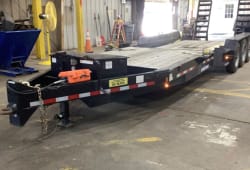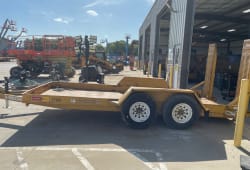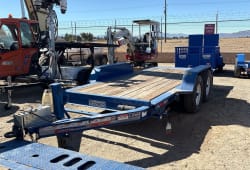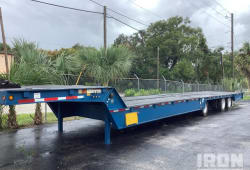Understanding Prefabricated Components: Expedite Building Construction
14 Min read
)
August 13, 2023
In the world of construction, speed, and efficiency are key factors in completing building projects. Traditional construction methods can often be time-consuming and labor-intensive, leading to delays and increased costs. However, with the advent of prefabricated components, the construction industry has seen a significant shift toward faster and more streamlined building processes.
Understanding Prefabrication in Construction
Prefabrication involves the manufacturing of building components off-site in a controlled environment, which is then transported and assembled at the construction site. This method allows for a more efficient construction process, as it eliminates many of the time-consuming tasks that are typically associated with on-site construction.
When it comes to prefabrication, the benefits extend beyond just time savings. The controlled environment in which the components are manufactured ensures that they are not subject to unpredictable weather conditions that can often slow down traditional on-site construction. This means that construction projects can progress smoothly and consistently, regardless of the external factors that may arise.
Not only does prefabrication offer improved efficiency, but it also allows for greater quality control. Since the components are fabricated in a controlled environment, manufacturers hacanlosely monitor the production process and ensure that each component meets the highest standards of quality. This level of precision and consistency is often difficult to achieve with on-site construction, where factors such as human error and varying weather conditions can impact the outcome.
The Concept of Prefabricated Components
Prefabricated components, also known as prefab modules, refer to pre-engineered elements of a building that are manufactured off-site. These components can include walls, roofs, floors, and even entire room units. Each component is fabricated to the exact specifications and requirements of the construction project, ensuring a precise fit and finish when assembled on-site.
One of the key advantages of using prefabricated components is the ability to customize them to meet specific project requirements. Manufacturers can work closely with architects and contractors to ensure that each component is designed to fit seamlessly within the overall structure of the building. This level of customization allows for greater flexibility in design and can result in more efficient use of space.
Additionally, prefabricated components offer the advantage of being easily transportable. Since they are designed to be assembled and disassembled, they can be relocated and reused in different locations if needed. This flexibility not only reduces waste but also allows for more sustainable construction practices.
History and Evolution of Prefabrication
The concept of prefabrication has been around for centuries, with early examples dating back to ancient civilizations. In ancient Rome, for example, large stone blocks were pre-cut and shaped off-site before being transported to the construction site for assembly. This early form of prefabrication allowed for faster construction of monumental structures such as the Colosseum.
However, it wasn't until the 20th century that prefab construction gained significant traction. The post-World War II era saw an increase in the use of prefabricated components for mass housing projects, as they offered a quick and cost-effective solution to accommodate the growing population. This period marked a turning point in the construction industry, as the benefits of prefabrication became more widely recognized.
Over the years, advancements in technology and the construction industry have further refined the concept of prefabrication. Today, prefab components are created using sophisticated machinery and computer-aided design (CAD) software, ensuring precision and quality in every aspect of the manufacturing process. The use of robotics and automation has also revolutionized the production of prefab components, allowing for faster and more efficient manufacturing.
Furthermore, the evolution of prefabrication has not only impacted residential construction but also commercial and industrial projects. Prefabricated components are now commonly used in the construction of office buildings, hospitals, schools, and even large-scale infrastructure projects such as bridges and tunnels. The versatility and adaptability of prefabrication have made it a valuable solution for a wide range of construction needs.
The Role of Prefabricated Components in Modern Construction
Modern construction projects often face tight schedules and budget constraints. Prefabricated components play a crucial role in addressing these challenges, offering a range of benefits that contribute to expedited building construction.
When it comes to construction, time is of the essence. Prefabricated components provide a solution by significantly reducing construction time. With much of the construction work taking place in a factory setting, the weather and other on-site conditions do not impact the production process. This allows for a faster and more consistent construction timeline, minimizing the risk of delays. Imagine a construction project where the building components are manufactured off-site and ready to be installed as soon as the foundation is prepared. This streamlined process can save weeks, if not months, in construction time.
But speed is not the only advantage of using prefabricated components. Quality control is another significant benefit. Each component is manufactured to strict industry standards and undergoes rigorous quality checks throughout the production process. Skilled craftsmen meticulously craft these components, ensuring a higher level of craftsmanship, as well as better durability and performance in the finished building. This attention to detail and quality control measures result in a final product that meets or exceeds industry standards.
Now, let's take a closer look at some common types of prefabricated components:
Structural Panels
Structural panels are large prefabricated wall or floor panels that can be easily transported and installed. These panels are manufactured off-site, allowing for precise construction in a controlled environment. Once completed, they are transported to the construction site and assembled, reducing the time and effort required for on-site construction. Structural panels are commonly used in commercial buildings, residential homes, and even industrial facilities.
Modular Units
Modular units are complete room units that are manufactured off-site and assembled on-site to form a building. These units are designed and built in a factory setting, ensuring consistent quality and adherence to project specifications. Once manufactured, they are transported to the construction site and efficiently assembled like building blocks. This method of construction allows for flexibility in design, as well as faster construction times. Modular units are commonly used in housing developments, hotels, and student accommodations.
Precast Concrete Elements
Precast concrete elements are precast elements such as beams, columns, and slabs, which are produced in controlled environments and delivered to the construction site. These components are manufactured off-site, allowing for precise casting and curing processes. Once ready, they are transported to the construction site and installed, reducing the need for extensive on-site concrete work. Precast concrete elements offer durability, strength, and design flexibility, making them suitable for various construction projects, including bridges, parking structures, and high-rise buildings.
As you can see, prefabricated components offer numerous advantages in modern construction. From speeding up construction time to ensuring consistent quality, these components have revolutionized the industry. With the ability to manufacture components off-site and deliver them when needed, construction projects can be completed more efficiently, meeting tight deadlines and budget constraints. Embracing prefabrication is a step towards a more sustainable and cost-effective future in the construction industry.
The Process of Building with Prefabricated Components
The construction process with prefabricated components can be divided into three main stages: design and planning, manufacturing of components, and on-site assembly.
Design and Planning Stage
During the design and planning stage, architects and engineers work closely with manufacturers to develop detailed plans and specifications for the prefabricated components. This stage involves the consideration of various factors such as structural integrity, aesthetics, and functionality.
With the help of advanced CAD software, designers can create accurate 3D models of the building, allowing for better visualization and coordination of the different components and systems. This collaborative approach ensures seamless integration between the prefab components and traditional construction elements.
Additionally, during the design and planning stage, architects and engineers also take into account environmental factors such as energy efficiency, sustainability, and the use of eco-friendly materials. They may incorporate features such as solar panels, rainwater harvesting systems, and green roofs into the design to minimize the building's carbon footprint.
Manufacturing of Components
Once the design phase is complete, the manufacturing of the prefabricated components can begin. Depending on the type and complexity of the components, different manufacturing processes may be used. These can include cutting, welding, molding, and assembling various materials such as steel, wood, and concrete.
Throughout the manufacturing process, strict quality control measures are implemented to ensure that each component meets the required standards. This includes testing for strength, durability, and dimensional accuracy. Advanced technologies such as robotic automation and computer-controlled machinery are often employed to enhance precision and efficiency in the manufacturing process.
Moreover, manufacturers may also prioritize sustainability and environmental responsibility by using recycled materials, minimizing waste, and optimizing energy consumption during the manufacturing process. This commitment to eco-friendly practices further enhances the overall sustainability of the construction project.
On-site Assembly
Once the prefab components are completed, they are transported to the construction site for assembly. This process involves skilled workers who are experienced in the handling and installation of prefab components.
On-site assembly typically involves the use of cranes and other heavy machinery to lift and position the components into place. The components are then connected and secured according to the design specifications, creating a strong and stable structure.
In addition to the assembly of the prefab components, on-site construction may also involve the installation of various systems such as electrical, plumbing, and HVAC (heating, ventilation, and air conditioning). Skilled tradespeople work in tandem with the assembly team to ensure that all systems are properly integrated and functioning.
Furthermore, on-site construction often requires careful coordination and scheduling to ensure efficiency and minimize disruptions. Project managers oversee the entire process, ensuring that timelines are met and any unforeseen challenges are swiftly addressed.
Overall, the use of prefabricated components in construction offers numerous advantages, including reduced construction time, improved quality control, and enhanced sustainability. By streamlining the design, manufacturing, and assembly processes, prefabrication revolutionizes the way buildings are constructed, providing innovative solutions for a rapidly evolving industry.
Case Studies: Successful Use of Prefabricated Components
The use of prefabricated components has been widely adopted in various types of building projects, including residential and commercial buildings. This innovative construction method has revolutionized the industry, offering numerous benefits and opportunities for both homeowners and commercial developers.
Residential Buildings
In the residential sector, prefab components have proven to be a game-changer. By reducing construction time, homeowners can move into their new homes sooner, minimizing disruption and inconvenience. This accelerated construction process not only saves time but also reduces labor costs, making it an attractive option for both builders and homeowners.
Moreover, prefab components have allowed for greater design flexibility, enabling architects to create unique and modern living spaces. With a wide range of prefabricated options available, homeowners can choose from various styles, sizes, and finishes to meet their specific needs and preferences. This customization aspect adds a personal touch to the construction process, creating homes that reflect the individuality of the homeowners.
Furthermore, the use of prefabricated components in residential buildings has significant environmental benefits. The controlled manufacturing process of these components reduces waste and minimizes the environmental impact of construction. Additionally, the energy efficiency of prefab homes contributes to a greener and more sustainable future.
Commercial Buildings
For commercial developers, the speed of construction is crucial in maximizing returns on investment. Prefab components have enabled the rapid construction of office buildings, retail spaces, and warehouses, allowing businesses to start operations sooner. This accelerated construction process not only saves time but also reduces financing costs, as the construction period is significantly shortened.
Furthermore, the use of prefabricated components in commercial buildings offers increased flexibility and adaptability. These components can be easily reconfigured or expanded, allowing businesses to adapt to changing needs and market demands. This scalability aspect provides a competitive edge, as commercial spaces can be modified without causing major disruptions or requiring extensive renovations.
In addition to the economic benefits, prefabricated components also offer enhanced quality control. The manufacturing process takes place in a controlled environment, ensuring consistent quality and minimizing the risk of defects. This high level of quality control translates into buildings that are structurally sound, aesthetically pleasing, and built to last.
Moreover, the use of prefab components in commercial buildings aligns with sustainable practices. The controlled manufacturing process reduces waste and optimizes material usage, resulting in a more environmentally friendly construction method. Additionally, the energy efficiency of prefab buildings contributes to reduced operational costs and a smaller carbon footprint.
In conclusion, the successful use of prefabricated components in both residential and commercial buildings has transformed the construction industry. With benefits such as accelerated construction time, design flexibility, environmental sustainability, and enhanced quality control, prefab components have become a preferred choice for many builders and developers. As the demand for efficient and sustainable construction methods continues to grow, prefabrication is expected to play an even more significant role in the future of building projects.
Future Trends in Prefabrication
Prefabricated construction is continuously evolving, and several future trends are shaping the industry.
One of the key future trends in prefabrication is the integration of technological advancements. With advancements in robotics and automation, the manufacturing process of prefab components is becoming even more efficient and precise. Robotic arms are now being used to assemble and weld components, reducing the need for manual labor and increasing productivity. Additionally, 3D printing technology is being utilized to create complex components with intricate designs, further pushing the boundaries of prefabrication. This technology allows for precise customization and rapid production, making it ideal for large-scale projects.
Another important trend in the future of prefabrication is sustainability. As environmental concerns become increasingly important, the construction industry is focusing on sustainable practices. Prefabrication offers several sustainability benefits, including reduced waste. With the ability to manufacture components in a controlled factory environment, the amount of waste generated during construction is significantly reduced compared to traditional construction methods. Additionally, prefabricated buildings are designed to be energy-efficient, with features such as improved insulation and advanced HVAC systems. This results in lower energy consumption and reduced carbon emissions. Furthermore, the use of eco-friendly materials, such as recycled steel and sustainable wood, is becoming more prevalent in prefabricated construction, further contributing to a greener future.
Furthermore, prefabrication is also driving innovation in architectural design. The ability to create complex and unique designs with prefabricated components opens up new possibilities for architects and designers. With the flexibility of modular construction, buildings can be easily modified and expanded, allowing for future adaptability. This is particularly beneficial in sectors such as healthcare and education, where the need for flexible spaces is crucial.
In conclusion, the future of prefabrication is exciting and promising. Technological advancements are revolutionizing the manufacturing process, making it more efficient and precise. Sustainability is also a key focus, with reduced waste and improved energy efficiency being significant benefits. Furthermore, the flexibility and adaptability of prefabrication are driving innovation in architectural design. As the industry continues to evolve, prefabrication will play a vital role in meeting the demands of a rapidly growing and changing world.
Challenges and Solutions in Prefabricated Construction
While prefabricated construction offers many advantages, it is not without its challenges.
Common Obstacles in Prefabricated Construction
One common challenge is the coordination between different trades and stakeholders involved in the construction process. Each prefab component needs to be precisely designed and manufactured to fit seamlessly with other components and on-site construction elements.
In addition, transportation logistics can also pose a challenge, as oversized and heavy components need to be carefully coordinated and delivered to the construction site on schedule.
Overcoming Challenges in Prefabricated Construction
To overcome these challenges, effective project management and communication are crucial. Proper coordination and collaboration between architects, engineers, manufacturers, and contractors ensure that each step of the construction process is executed smoothly.
Technology, such as Building Information Modeling (BIM), can also play a significant role in addressing these challenges. BIM allows for better visualization and coordination of the various components, facilitating seamless integration between prefabricated and traditional construction methods.
In conclusion, prefabricated components have revolutionized the construction industry by expediting building construction, reducing costs, and enhancing quality control. As technology continues to advance and sustainable practices gain traction, prefabrication will undoubtedly play an even more significant role in the future of construction.














